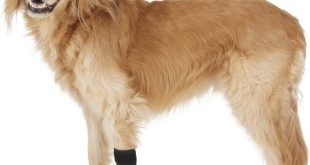There is no doubt that dogs who suffer from Knuckling have significantly reduced quality of life. Dogs are are playful and fun loving creatures and knuckling can prevent your dog from enjoying the best parts of life. Thankfully, there are products on the market that can make your dog’s life a bit easier and In this article we will be talking about a few, specifically supplements and dog foods that can help your dog overcome Knuckling.
Table of Contents
- Introduction
- What is Carpal Laxity Syndrome (Knuckling)?
- How I fed my pup and what supplements were needed to correct this problem.
- Here are some safe dietary options for variety.
- Conclusion
Introduction
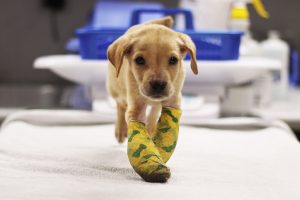
When I just got my pup, Star, I noticed about two weeks later that his front legs looked crooked.
This was awkward but surprisingly, it didn’t seem painful to him. However, it looked like his legs were struggling to support his body weight. He stumbled over occasionally, and it was very obvious whenever he stood straight on all fours.
I contacted my vet who said; “Yes I’ve seen that in puppies, the kind of food you are feeding him may be too high in protein which is making his bones outgrow his joints/ligaments or vice versa. Please bring him to the clinic for a proper check and possible treatment”.
On my visit to the vet, my pup was diagnosed with carpal laxity syndrome which was making his front legs look bow-legged. I was made to understand that this isn’t uncommon especially for the fact that Star is of a large breed – he’s a Dobermann…and since he’s growing so fast, things like this can happen.
From all indications, my pooch’s problem came from his diet. According to the vet’s advice, I changed his diet, and his condition took just a few weeks to resolve.
But before diving into the kind of diet I employed, let’s get a little more education about Star’s condition.
What is Carpal Laxity Syndrome?

This is a condition also called knuckling over in puppies…and a general term used to describe hyperextension or hyperflexion in dogs.
This condition is often in pups below 4 months old (but sometimes, it can be seen in 7 month-old pups).
It can happen when malnourished puppies suddenly start getting quality nutrition, leading to rapid growth.
It can also happen with over-nutrition in healthy pups which causes rapid growth.
Breeds such as Shar Peis and Dobermann’s appear to be predisposed to the condition.
And male puppies are often more affected due to their very rapid growth.
This condition may affect just one of a pup’s front legs or both of them – in Star’s case, both legs were affected.
And finally, carpal laxity syndrome may be a result of hyperextension or hyperflexion.
Carpal Hyperextension
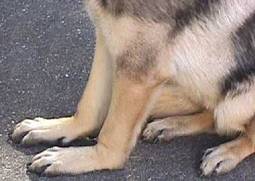
If your dog’s knuckling is caused by Carpal Hyperextension, you will notice that your pup walks with the palm or plant of his paws touching the ground instead of with the tip of his toes (known respectively as a ‘palmigrade’ or ‘plantigrade’ stance).
In puppies, the hyperextension is mainly due to the looseness of the carpal flexor tendons associated with poor muscle tone.
Affected puppies walk with the excessive extension of the carpus (with a gait more like a bear than a dog).
Carpal Hyperflexion
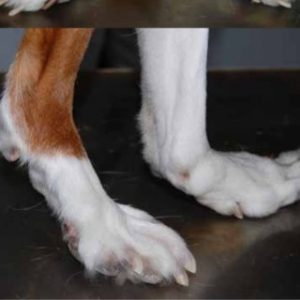
If however the pup has Carpal Hyperflexion, the growth plate of its front leg, either in the wrist or carpal area, occurring when the part of your dog’s body that bears weight is not able to support its entire body as a result of the muscle, tendon, and ligaments being poorly developed.
So, the affected leg(s) will bulge at the sides, making the pup look bow-legged. This is exactly what Star was experiencing.
Please note that dogs who suffer carpal hyperextension/hyperflexion do not present signs of being infected by a disease or other pathology.
Dog Food and Supplements I fed my Pup to Correct His Knuckling Problem
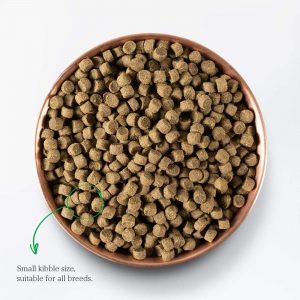
First, to correct this problem, I switched Star’s food to a Large/Giant breed formula which is 23% protein and 12% fat food. Feeding Star with this meant a slower more even growth, especially when given in the proper amounts.
According to my Vet’s advice, I also included some probiotics in his diet when I switched to avoid loose stools.
As to feeding, here’s a guide I found which I feel will be helpful for anyone when feeding their pup who has carpal laxity syndrome;
- 2 months; 2 – 4 cups per day – (divided into 3 meals daily)
- 3 months; 3 – 5 cups per day – (divided into 2 meals daily)
- 4 months; 4 – 6 cups per day – (divided into 2 meals daily)
- 5 months; 5 – 7 cups per day – (divided into 2 meals daily
- 6 months; 6 – 8 cups per day – (divided into 2 meals daily)
As for the Supplements
My vet recommended the following supplements for my pup, and I’m starting with the most important so if you can only find one, it’s completely okay, to begin with, it.
MSM Powder
This supplement supports connective tissues such as collagen, ligaments, and tendons.
And below is the dosage for MSM to be given according to your pup’s weight. This should be given with food.
- 1 – 10 kilos of body weight: 1/4 teaspoon.
- 10 – 20 kilos of body weight: 1/2 teaspoon.
- 20 – 40 kilos of body weight: 3/4 teaspoon.
- Over 40 kilos: 1 teaspoon and then 1/4 teaspoon for every 10 kilos over this.
These doses are made to cater to a wide range of doggie weights because this supplement is also used for dogs with joint problems. Also, the doses can be doubled in cases of joint disease/challenges.
It’s advisable to add Vitamin C to increase absorption of MSM. Use a ratio of four parts MSM to one part Vitamin C.
Zinc
When administering this supplement to your pup, it is very important to speak to your Vet about how much to give.
Anitone
This comes as a liquid, organic, nutritional supplement which provides over 60 minerals and traces elements in a highly bioavailable, chelated form.
The dosages are often inscribed on the packaging.
Antinol Rapid
This is a full spectrum omega-3 supplement that not only is used in dogs with the active joint disease but also used to support the growth of puppies and helps to prevent joint disease.
Surprisingly, it also enhances trainability in puppies and improves their coat and skin.
- Never administer calcium supplements unless this is prescribed by your vet.
If you are ever concerned about your pup’s knuckling, please consult your vet and do not hesitate to get a second opinion if you feel it necessary.
Here are some safe dietary options for variety.
Like I did for Star, you can make a gravy with canned meats, or homemade vegetable soups.
Simply use a little canned meat and mix it with water for gravy.
Another option you can use is dehydrated raw dog food, it is what I use to provide a 10% raw component to Star’s kibble. It is balanced in calcium and phosphorus ratios which are very important for growing pups.
If you also want to do your fruits and veggies here are some suggestions.
Please use these recommended foods in moderation:
Yogurt, buttermilk, cauliflower, berries, melons, apples, mangoes, banana, tomatoes, carrots, broccoli, oranges, squash, sweet potato, green beans, and zucchini…these can be minced or diced and given in a cooked or raw form.
It’s critical to avoid raw onions, garlic, grapes or raisins, and macadamia nuts.
Drinking Water
WATER ON KIBBLE – for puppies you want to use about 1/8 cup and older puppies 1/4 cup water with about 3 – 4 tablespoons of canned meat.
The food should be moist, not floating, and sloppy (reduce amount for smaller breeds accordingly).
Do not microwave, soak or use hot or very warm water on the kibble as it will destroy the integrity of the friendly yogurt type cultures, the fragile vitamins/minerals, and amino acids in the food.
You should never withhold water from your dog. As this can cause bladder infections.
Conclusion
In many cases, the dog’s wrists will straighten out on their own within a few weeks and will not require treatment. However, seeing a veterinarian would be wise as your dog could develop a lifelong deformity.
Also, some vets do not understand this issue due to minimal or no training in small animal nutrition and little experience in large/giant breed growth patterns.
If there’s no improvement within 2-3 days of being on this total nutritional program, or if your pup’s condition worsens, then you need to consider wrapping your dog’s joints for support.
There are several commercially made braces you can get for your pup. Simply check pet stores for the most effective and most comfortable ones you can find.
 Total Pooch Dog Supplements, Tear Stain Removers, De-wormers, Tylosin for Dogs and other great products.
Total Pooch Dog Supplements, Tear Stain Removers, De-wormers, Tylosin for Dogs and other great products.



